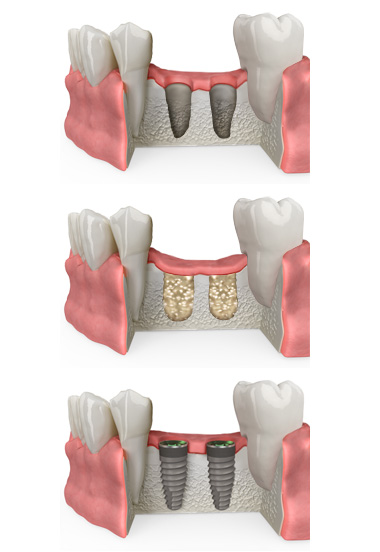
Bone Grafting
Over a period of time, the jaw bone associated with missing teeth, begins to resorb as the result of the lack of function, periodontal disease or trauma. This often leaves a condition in which there is poor quality and quantity of bone suitable for placement of dental implants in the required location. Bone grafting is a surgical procedure that replaces missing bone with either new bone from the patient's own body, with a natural bone substitute or with a synthetic graft material.
Reasons for bone grafting
There are a wide variety of reasons why bone grafting may be the best option for restoring the jaw bone.
Dental implants - Implants are the preferred replacement method for missing teeth because they restore full functionality to the mouth; however, implants need to be firmly anchored to the jawbone to be effective. If the jawbone lacks the necessary quality or quantity of bone, bone grafting can strengthen and thicken the tooth site to allow future implant placement.
Ridge augmentation - Ridges in the bone can occur due to trauma, injury, birth defects or severe periodontal disease. The bone graft is used to fill in the ridge and make the jawbone a uniform shape.
Pathology - Pathologic lesions that develop within the bone can resorb vital bone structure that gives strength to the jaw bone and supports the teeth. When these lesions are removed bone grafting is done to replace this deficient bone to support the jaw bone and teeth together.
What Does Bone Grafting Involve?
Bone grafting is done as an in-office same day procedure. Bone is typically harvested from your own body (or on rare occasions obtained from a bone bank) and added to the affected site. This natural bone is taken from within your mouth for smaller grafting needs or from your hip or lateral knee for larger more involved requirements. The bone graft fills in the missing bone but also stimulates the growth of your own bone that acts as a strengthening bridge between the graft and your existing bone. The bone graft is then allowed to heal in the new location over a period of a few months. Over time, most of the graft material will be replaced by your own newly formed bone.